Context
Optical phase measurement with interferometers is one of the most advanced techniques in classical metrology and most recently led to the detection of gravitational waves. On the other hand, quantum technologies have received substantial attention as a means to improve the resolution and precision of metrological tasks by reducing statistical errors due to quantum noise. Indeed, the optimal accuracy that can be achieved by measurements of an unknown phase by an interferometer with classical methods is given by the standard quantum limit (SQL) $\dfrac{1}{\sqrt{N}}$, where N represents the number of particles used to test. This limit can be overcome by using quantum light. A canonical example relies on entanglement of N particles to measure a phase with a precision $\delta \phi= \dfrac{1}{N}$, i.e. the Heisenberg limit. This means that all N photons are in an equal superposition of being in either one of the two modes of an interferometer, resulting in a shortened de-Broglie wavelength $\dfrac{\lambda}{N}$, where λ is the wavelength of the individual photons. This leads to an increase of the interferometric fringe pattern frequency by a factor of N (super-resolution) without changing the optical wavelength, allowing the latter to be chosen for optimized transmission through optical single-mode-fibers. Progress in this regard has been made with trapped ions, atoms and photons. Yet, far less attention has been given to show the measurement advantage, or quantum enhancement, to measure a phase shift imparted by acceleration or rotational motion. A pioneering quantum fibre-optic gyroscope based on a Sagnac interferometer architecture harnessing an entangled-photon source was recently proposed.
Objectives
The main objective of this post-doc relies on the development of an entanglement-enhanced optical fiber sensor made of an efficient energy-time entangled photon-pair source working in the telecom range, and home-made interferometers. The main idea lies in understanding how this Q. approach behaves versus a classical approach, in term of accuracy, bandwidth, photonic noise. We can also plan to exploit DWDM strategy to be compliant with ITU grid. Furthermore, a great attention will be paid on the integration/compacity. On the other hand, once an application will be identified (navigation, sismic, gyro etc...), a proof-of-concept will be realized within a close collaboration with a partner of the consortium.
In addition of this experimental and exploratory part, another objective of the thesis lies in a theoretical exploration of both quantum resources and system architecture to envision the deployment of practical quantum fibre optic sensors exhibiting enhanced sensitivity with respect to classical resources.
Candidate’s profile:
The 24-month position are already funded. The post-doctoral work will mainly be conducted at the Institut de Physique de Nice for demonstrating the operational quantum link. The candidate will work in close collaboration with a Ph-D applicant already involved in the project.
Applicants should have:
-An excellent first degree and completed doctorate (or close to completion) in physics.
-A strong background in quantum optics and electronics.
-The ability to perform excellent research in photonics (quantum, nonlinear, integrated) evidenced by a strong publication record in international peer-reviewed journals.
-Ability to work in interdisciplinary projects (experiments, theory).
-Evidence of outstanding ability to work independently, and as an active collaborative member of a research team, who is well organized and self-motivated, while working cooperatively at all levels. Be highly motivated and have a strong commitment to research.
-Good communication skills both orally and in written English, suitable for the preparation of scientific publications in world-class journals and presentation of research at international conferences.
For more information, please contact Dr. Labonté Laurent at, laurent.labonte@inphyni.cnrs.fr.
Website « Photonique et Information Quantique » Inphyni-Team:
https://inphyni.cnrs.fr/sites/teams/quantum-photonics-and-information/
